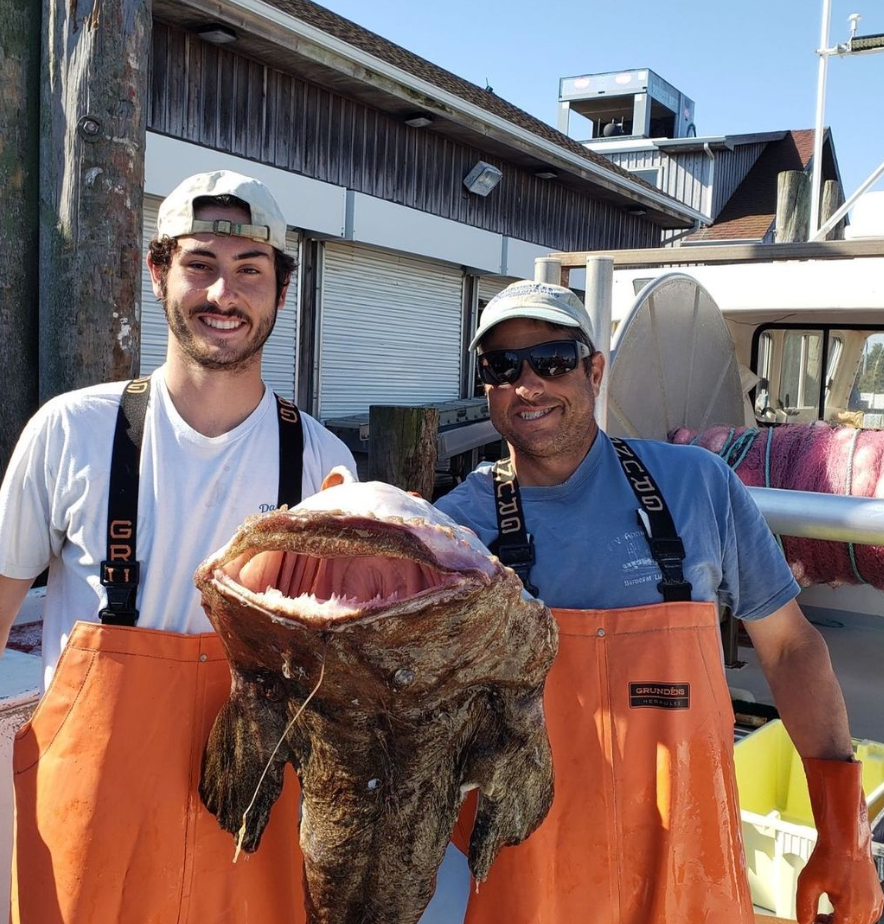
Monkfish
About monkfish
Monkfish are bottom-dwelling fish, using their fins they are able to "walk" on the ocean floor. With similar flat bodies like flounders, usually the tail of the monkfish is what it is eaten. Monkfish have large mouths with many rows of teeth and are able to change the color of their body making them stealthy predators.
Storage and Cleaning
- Monkfish should be refrigerated immediately.
- Store the fresh fish in the coldest part of your refrigerator (32 degrees Fahrenheit) for up to two days.
- To freeze your fish, wrap it tightly in aluminum foil, plastic wrap, or freezer paper to prevent freezer burn. Place the wrapped fish in a heavy duty freezer bag if you'd like to go the extra mile! Freezing your raw monkfish will preserve the fish for about 2 to 3 months.
- Do not directly ice a monkfish fillet! Filleted monkfish should be stored in a sealed plastic container and surrounded with ice.
Cooking
- Monkfish have a large bone in their tail. It is not necessary to remove before cooking.
- Remove any pink or grey-colored film on fillets or whole fish then rinse in cold water before cooking.
- Monkfish tend to be lean and will shrink once cooked. Salt or brine your fish for about an hour to keep the fish moist.
- Monkfish meat is light pinkish in color, and tender yet thick and meaty in texture just like lobster meat. It also tastes like a lobster because of its delicate sweet flavor. This tasty seafood is usually served in restaurants as baked, braised, broiled, fried, grilled, poached, or even sautéed as a dish. Its meat can easily absorb marinades and sauces making itself more flavorful and easy to prepare at home.
- During the process of cooking, monkfish usually excrete a white fluid. You won’t notice it if you’re cooking the fish in soups, sauces, or with other liquid substances. But if you’re going for different cooking methods such as frying or grilling, soaking it in salted water for one hour and patting it dry with a paper towel or cloth would avoid the excretion of the fluid.
More on monkfish
Described as tadpole-like in appearance, with a body that is mostly a broad head with a large mouth and a narrow, tapering body, monkfish are live on the ocean bottom, typically on sand, mud, and shell habitats. They can tolerate a wide range of temperatures and depths from inshore up to at least 2,950 feet deep, and are usually found in the Northwest Atlantic Ocean, from the Grand Banks and northern Gulf of St. Lawrence south to Cape Hatteras, North Carolina.
Monkfish are opportunistic feeders, feeding on whatever prey is available at the time. Adults mainly eat fish, including other monkfish, but also consume crustaceans, mollusks, seabirds, and diving ducks. Larvae feed on zooplankton (tiny floating animals); juveniles eat mostly small fish including sand lance, as well as shrimp and squid. Predators include swordfish, sharks (dusky, sandbar, spiny dogfish, and smooth dogfish), and thorny skate. Monkfish have been observed in the stomachs of other monkfish, though cannibalism rates are probably quite low with the possible exception of large breeding females.
Monkfish spawn February through October, progressing from south to north. Monkfish release large "egg veils" that can contain more than 1 million eggs. These egg veils float freely in the surface water according to the prevailing currents. They are thought to remain near the surface for 1 to 3 weeks (depending on temperature) until the egg veil disintegrates and the larvae hatch. NOAA's Northeast Fisheries Science Center runs the Monkfish Egg Veil Sighting Network to help scientists to better understand when and where monkfish spawn and where the egg veils travel after spawning. Scientists use the information on egg veil sightings along with satellite data and ocean circulation patterns to predict where eggs will hatch.
Photo: @vikingvillagelbi, Viking Village fisherman holds freshly caught monkfish
Last updated: 01/23/2023